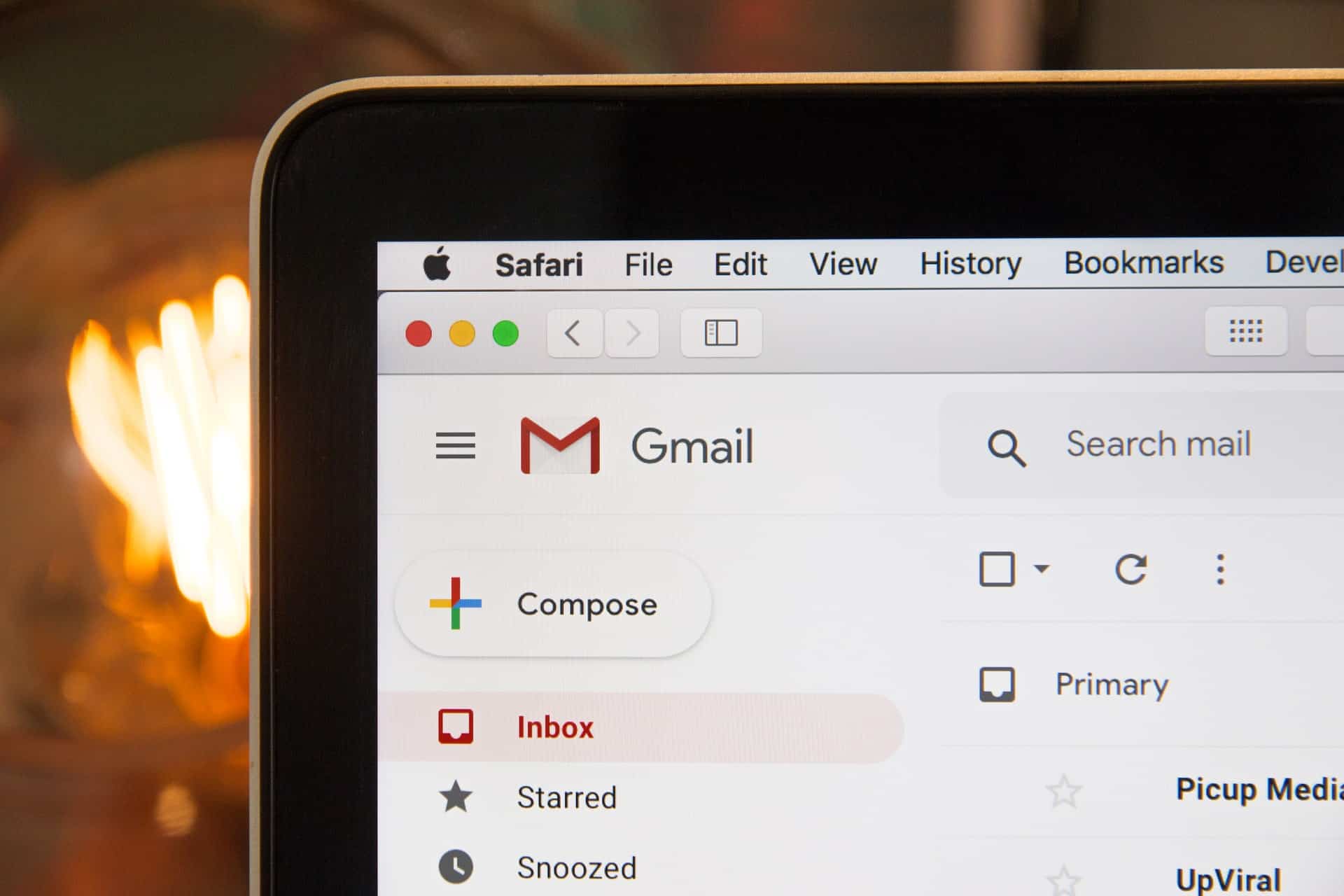If you’re a web designer or another kind of internet entrepreneur thinking about approaching web developers as clients, cold emailing is one of the top methods to use.
Apart from building the tools that keep improving the internet’s utility, website developers provide a great potential client base for a variety of online and digital professions. If you want to get in touch with website developers using cold emailing, read on to find out more tips about email subject lines, considerations for cold emailing, and tips to keep you from accidentally spamming potential clients.
Cold Emailing
Cold emailing is the process of sending an email to a potential connection or client who you haven’t spoken to before. The name comes from cold calling, the same process but in a phone call, which has declined in popularity over time.
Cold emailing is much more popular with both the senders and recipients because email is asynchronous. It doesn’t require immediate action from either party, and it can occur at any time; later in the article, you’ll find out some ideal times to send cold emails, however.
Cold emailing is also great because it requires less time on your part as the person doing the outreach. You can send several emails at once, which you can’t do with phone calls, and it’s easier to iterate as you can see the email text and responses in front of you.
Approaching web developers with cold emailing is a no-brainer – if you’re both conducting internet business, email is an ideal way to reach them.
It’s also much easier to use cold emailing to get into contact with potential mutual connections, who could then act as a way to get potential clients to open emails.
How Often to Use Cold Emailing
Cold emailing is a good marketing tool for link building, brand collaborations, service offerings, and much more – but you need to know what you are doing. One of the top concerns you’ll have with cold emailing is how often you should do it.
It’s possible that sending the same email more than once might get a web developer’s attention when they don’t respond the first time, but you should generally avoid this practice.
Generally, you shouldn’t email the same person more than twice without a response. After that point, you’re spamming them and may have some action taken against you, or, at best, you’ll only be redirected to their spam folder.

You could also think about this number in terms of how many cold emails you can send out at once. You can certainly batch cold emails. Adding notes to personalize each one a bit. It depends on the resources you have to write and personalize them.
Something to think about is that you don’t want to email a lot of potential clients at once. If you find that certain methods might work better to get responses, you don’t want to have emailed all of your potential clients using the old cold emailing template.
Cold Emailing Schedule
You might think that because email is asynchronous that the time of day you send your emails doesn’t matter. This isn’t necessarily true. There are better times of day to send emails, and when you’re sending a cold email, you want to make the best impression possible.
There are certain times of day that make for the best response numbers, more friendly responses, and overall, a higher chance of working with the person you’re emailing.
Mailchimp, the email marketing giant, has done many case studies on when is the best time to send emails. Their research provides a great insight into when the ideal time for cold emails might be. The peak time for recipients to open and read new emails was around 10 AM in their respective time zones.

While 10 AM is the time that you’ll have the highest read rates on average, you want to make sure you’re hitting this schedule to get those clicks. That’s why sending emails before or after standard work hours of 9 AM to 5 PM will make sure that people are receiving your emails early in the day.
There are also better times of the week to send emails than others if you’re hoping to get clicks. While Tuesday may not seem like a productive day for email, it turns out that it’s the optimum day of the week for people to open emails.
Monday through Friday as a whole remain the optimum days for email sending and receiving, but try sending your emails earlier in the week, as this data shows. If they do open your email and respond, there’s a greater chance you’ll have more of a conversation earlier in the week before the weekend starts.
Subject Lines
Subject lines are one of the most obvious ways to get someone to click on your email and, more importantly, respond and strike up a conversation.
But you don’t want to seem too much like you’re marketing in the subject line as it may come off as suspicious and will have the opposite effect.

While it might be tempting to use “re:” in your subject line to get clients to think you’ve already been in contact, this tactic is something you should avoid because it can come off as disingenuous.
Much of the decision of whether or not an email is spam is based on the subject line. As many as 69% of people will avoid reading an email or send it to spam without even interacting with the contents of the email.
Here are a few rules of thumb for what you should include in your subject line to entice potential clients to open your cold email:
- Include a fact: You could do some quick research about your potential client’s website and present this to them in the subject line. For example, you could give a fact about their current SEO rankings for a certain keyword.
- Provide a solution: If you notice an issue or other small problem that’s immediately fixable and will also help to boost your potential client’s online image, drawing their attention to it in a subject line is a great way to get an open and likely a response.
- Use the person’s name: Email subjects with your name in them are sure to draw your attention – it’s a well-known email marketing technique.
- Use a referral: Having a referral is a great way to ensure a response. If you mention a common contact between you and the person you’re emailing in the subject, such as a previous client or someone in the same field, you’ll draw their attention and make them want to open it.
Things to Avoid in Cold Emailing
You might be worried that cold emailing is technically spam because the recipient didn’t ask to receive the email in the first place. The CAN-SPAM Act of 2003 is a law for marketing, including commercial email, set forth by the Federal Trade Commission.

The FTC has a few rules that you can follow both to ensure that your emails are approved and that you don’t land a several-thousand-dollar fine for breaking CAN-SPAM. While crafting your subject lines and email, make sure to follow these seven rules:
- Make sure your header information isn’t misleading or deceptive: The header information from, to, reply to, date and the subject must all be completely accurate. This information also includes your email address and domain name, which must be wholly accurate.
- No inaccurate subject lines: The subject line has to be related to the actual content of your email. This includes the “re:” tip mentioned above.
- Disclose advertisements: Since you are technically advertising a business or service, you have to mention that your email is an advertisement. The FTC doesn’t have any specific rules about how you have to do this disclosure, but it needs to be present and evident that your email is advertising your service.
- Give your location: You have to list your physical postal address in your email, which includes a business address or an address that receives commercial mail, your home address, or a post office box.
- Give recipients the option to opt-out of more emails: Because the CAN-SPAM Act centers on spam, you must give recipients a choice to stop receiving your emails so you are not reported for spam. The opt-out message must be recognizable, meaning it should be in a different font, font size, or color.
- Honor these requests quickly: You must process opt-out requests from recipients within ten business days.
- Have the same rules for employees: If anyone else works with or for you, they should also follow these rules when communicating with clients.
Cold Email Template
While you’ll eventually find your footing and wording that you like better as you get more practice with cold emailing, it’s always easiest to start with a template and get a feel for what exactly you should be covering in your emails.
The components of the cold email are the opening, a warm but not too familiar greeting, letting your potential client know that you’re a real person but still a professional. Next, you’ll describe how you found this potential client, for example, through a referral or internet research.

A good way to start an email if you don’t have a referral is to make one. Start by emailing a person who knows about the web developer’s business. This person could be someone who works with them or for them.
In this email, you’ll write something like:
Hey [Contact Name],
Sorry to bother you, but I was hoping you could answer a quick question. Do you know who handles web services for [Business Name]’s site? I’d love to chat with them and just want to reach out to the right place.
Thanks for your help,
[Name]
Once they respond, you can use their name in your initial cold email for your client.
Hey [Business Owner],
[First Contact] gave me your information and told me to reach out to chat about your website. I think your site has a really solid design – easy to navigate with a clear design.
But I think that your site could benefit from having a more reactive design, which would help boost your rankings. I’ve been taking some notes, and I’d love to chat about some of the ideas I have if you have time.
Warm regards,
[Name]
This template is warm, to the point, and introduces a person you both might know.
Final Thoughts
Cold emailing can seem daunting at first, and when you’re just starting, it can seem like the only responses you receive are rejections, and those only come after dozens of emails. But you’ll also find that after several rounds of emails, you’ll start to see results and to discover wording and schedules that work best for you.
There’s plenty of success to be found with cold emailing – you might even find yourself having to turn down opportunities after only a few rounds of emails.
![]()
![]() Latest posts by Editorial Staff (see all)
Latest posts by Editorial Staff (see all)
Where Should We Send
Your WordPress Deals & Discounts?
Subscribe to Our Newsletter and Get Your First Deal Delivered Instant to Your Email Inbox.
Thank you for subscribing.
Something went wrong.
Keep reading the article at WP Newsify. The article was originally written by Editorial Staff on 2021-03-31 09:25:48.
The article was hand-picked and curated for you by the Editorial Team of WP Archives.

